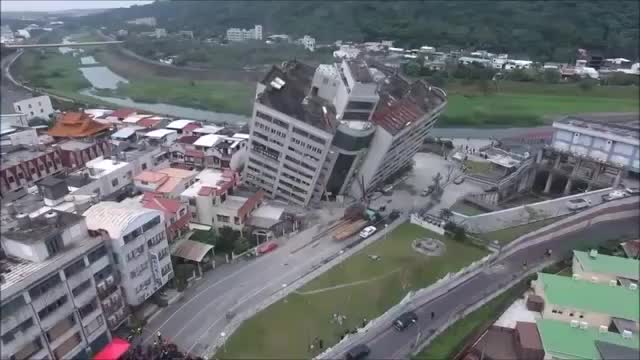Premium Only Content

EARTHQUAKE CAUGHT ON CAMERA
An earthquake (also known as a quake, tremor or temblor) is the shaking of the surface of the Earth resulting from a sudden release of energy in the Earth's lithosphere that creates seismic waves. Earthquakes can range in size from those that are so weak that they cannot be felt to those violent enough to propel objects and people into the air, and wreak destruction across entire cities. The seismicity, or seismic activity, of an area is the frequency, type, and size of earthquakes experienced over a period of time. The word tremor is also used for non-earthquake seismic rumbling.
At the Earth's surface, earthquakes manifest themselves by shaking and displacing or disrupting the ground. When the epicenter of a large earthquake is located offshore, the seabed may be displaced sufficiently to cause a tsunami. Earthquakes can also trigger landslides and occasionally, volcanic activity.
In its most general sense, the word earthquake is used to describe any seismic event—whether natural or caused by humans—that generates seismic waves. Earthquakes are caused mostly by rupture of geological faults but also by other events such as volcanic activity, landslides, mine blasts, and nuclear tests. An earthquake's point of initial rupture is called its hypocenter or focus. The epicenter is the point at ground level directly above the hypocenter.
The location below the earth's surface where the earthquake starts is called the hypocenter, and the location directly above it on the surface of the earth is called the epicenter. Sometimes an earthquake has foreshocks. These are smaller earthquakes that happen in the same place as the larger earthquake that follows.
An aftershock is a smaller earthquake that follows a larger earthquake, in the same area of the main shock, caused as the displaced crust adjusts to the effects of the main shock. Large earthquakes can have hundreds to thousands of instrumentally detectable aftershocks, which steadily decrease in magnitude and frequency according to known laws. In some earthquakes the main rupture happens in two or more steps, resulting in multiple main shocks. These are known as doublet earthquakes, and in general can be distinguished from aftershocks in having similar magnitudes and nearly identical seismic wave forms.
Magnitude is the physical size of the earthquake (see cross-section below), the length (L) x the width (W) x the slip (D). An earthquake has a single magnitude. The shaking that it causes has many values thay vary from place to place based on distance, type of surface material, and other factors.
-
 1:21
1:21
Sean Hannity
4 years agoCaught On Camera!
87K121 -
 9:17
9:17
AFV
4 years agoCaught On Camera
27.7K5 -
 0:10
0:10
That's Crazy!
4 years ago $0.17 earnedEclipse Caught on Camera
9204 -
 2:01
2:01
WFTS
4 years agoBabysitter abuse caught on camera
1.36K7 -
 1:45
1:45
KGTV
4 years agoHit-and-run crash in Shelltown caught on camera
99 -
 LIVE
LIVE
vivafrei
5 hours agoComey Trolled HARD! Babbitt Settlement! Live with Marco Polo (Author of Hunter Biden Laptop Report);
10,544 watching -
 LIVE
LIVE
Candace Show Podcast
1 hour agoTaylor Swift Is Now Team Baldoni…Here’s Why. | Candace Ep 187
3,211 watching -
 LIVE
LIVE
StoneMountain64
2 hours agoWarzone, but I DON'T snipe
484 watching -
 LIVE
LIVE
Untamed Nation
36 minutes agoTRUMP EXPOSES SOUTH AFRICAN PRESIDENT ⚠ Joe Oltmann and Matt Wallace | 21 MAY 2025
537 watching -
 2:16:40
2:16:40
The Quartering
4 hours agoDan Bongino Makes It Worse, James O'Keefe Takes Back Project Veritas, Borderlands 4 Drama & Comey
140K43